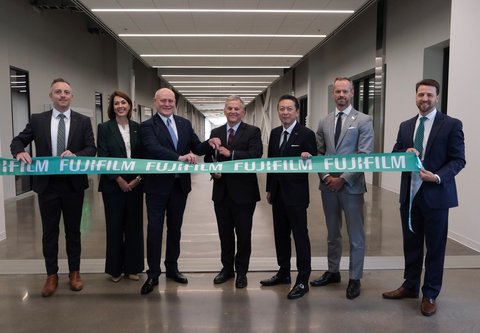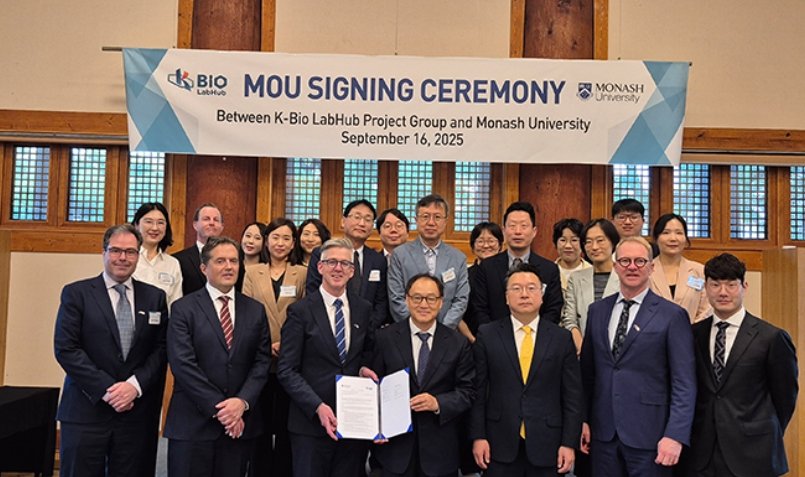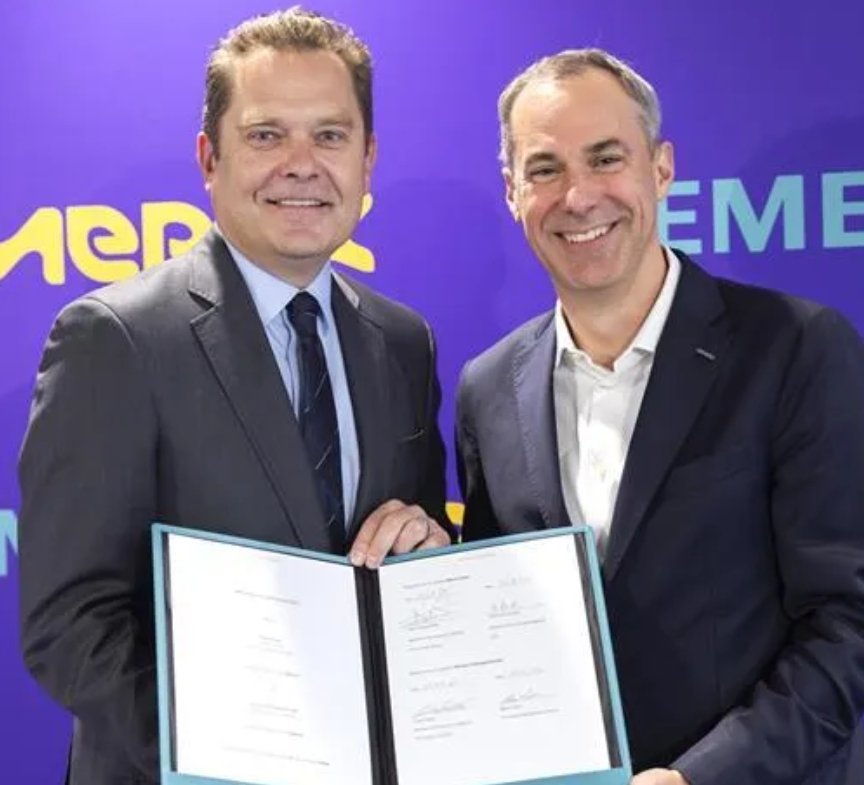
Cell and gene therapies are reshaping the landscape of modern medicine—but bringing these transformative treatments to patients demands overcoming major challenges in manufacturing, scalability, and regulatory readiness. On the sidelines of US BIO 2025,
In this BioSpectrum Asia Leadership Exchange, Thomas Fellner, Head of Commercial Development, Specialized Modalities, and Behnam Ahmadian Baghbaderani, Global Head of Commercial and Program Management, Specialized Modalities, share how Lonza is tackling these hurdles. From platform-based approaches and automation to investments in exosome and mRNA capabilities, they explain how the company is supporting developers to accelerate innovation and deliver next-generation therapeutics reliably and at scale.
BioSpectrum Asia Q&A
Thomas Fellner, Head of Commercial Development, Specialized Modalities, Lonza, shares his perspectives on tackling manufacturing challenges and advancing next-generation therapies.
What are the most significant challenges currently facing the manufacturing of next-generation cell and gene therapies, and how is Lonza innovating to overcome these hurdles?
Cell and gene therapies (CGT) are revolutionizing medicine, offering the possibility of cures for diseases once considered untreatable. But despite this incredible promise, access remains limited. However, despite their immense potential, there are significant challenges that hinder accessibility and scalability, including customization, early development challenges, and regulatory hurdles. As a result, only one in five eligible patients globally have access to approved therapies.
Manufacturing remains one of the biggest bottlenecks. Most cell therapies today require highly customized and patient-specific processes. While this flexibility is crucial, it also introduces complexity, variability, and manual steps that simply do not scale. These challenges result in inefficiencies, inconsistent processes, and increased costs.
A further constraint arises when commercial scalability and cost-efficiency are not integrated into early development. Unlike traditional biologics, CGTs carry a higher risk of commercial failure if scalability and cost-efficiency are not addressed early in development. In another words, CGT development cannot afford to treat scalability and cost-efficiency as afterthoughts. Furthermore, the evolving, complex regulatory landscape and safety concerns, particularly with highly innovative treatments, can lead to frequent setbacks and delayed commercial launches of these therapies.
At Lonza, we are not just aware of these challenges but tackling them head-on. We are investing in automation, digitalization, and developing smarter early-stage strategies to understand high-risk and high-variability steps from day one. We are investing in digital infrastructure, including electronic batch record systems like MODA-ES®, which streamline data capture and improve traceability across the manufacturing lifecycle. These tools not only reduce operator error but also enable open parallel processing, which is critical for increasing throughput and reducing the cost of goods.
Through these integrated solutions, we are advancing CGT manufacturing toward greater scalability, consistency, and accessibility, thereby accelerating the delivery of transformative therapies to patients worldwide.
How has Lonza expanded its end-to-end manufacturing capabilities for modalities like mRNA/LNP and microbial-based therapies, and what impact is this having on accelerating development timelines?
Lonza has significantly expanded its end-to-end manufacturing capabilities to support emerging modalities like mRNA/LNP and microbial-based therapies, with a clear focus on accelerating development timelines and reducing risk for drug developers. This experience was evident during the COVID-19 pandemic, when mRNA production scaled to GMP in under 9 months, demonstrating agility in manufacturing new modalities.
By integrating new technologies and harnessing knowledge transfer from traditional to advanced modalities, such as mRNA and exosomes, we have embedded these innovations into our collaborative, innovation-driven ecosystem. For more mature areas like microbial-based therapies, we continue to invest with purpose and expand facilities to meet our customers’ needs. For example, we added manufacturing capacity for clinical and commercial supply of microbially produced biologics at our Visp (CH) site. This expansion continues to build upon our state-of-the-art advanced development and manufacturing facilities and our strong track record in process transfer, scale-up, and BLA submission.
We are also investing heavily in enabling technologies that extend beyond the traditional CDMO support. From advanced analytics and automation platforms to digital QC tools, we develop capabilities that enhance our own operations and can also be deployed as standalone solutions for our partners. It is one more way we are helping move the industry forward.
We also believe in recruiting and investing in leading CMC talent across all functions to ensure drug developers have access to an agile global network of scientists and specialists. Our experts have deep expertise across therapeutic types and in areas such as data analysis, process transfer, supply chain, and other essential domains. Their diverse backgrounds allow them to apply best practices across therapeutic areas and drive smarter, faster decision-making throughout the development journey.
These investments, combined with our deep experience in early- and late-stage development, continue to ensure reduced development timelines, minimized unforeseen issues, fewer handoffs, and faster transitions for drug developers.
In your view, what key industry trends are driving the scale-up of CGT manufacturing, and how is Lonza positioning itself to address the disruptive challenges facing CDMOs in this rapidly evolving landscape?
The CGT landscape is undergoing a powerful transformation, driven by clinical advances, commercial momentum, and technological innovation. As CGTs shift from last-line options to second-line, and in some cases, even first-line treatments, the pressure is on delivering more reliable, scalable, and accessible manufacturing solutions.
This shift is amplified by many factors to meet the needs of stakeholders ranging from patients to regulators. First, expansion of CGTs is driven by patient need and demand from more prevalent diseases, such as multiple myeloma, Crohn’s disease, and neurological conditions. At the same time, we are witnessing a strategic pivot from autologous to allogeneic therapies, and a clear push toward automation and industrialization, where modular, closed, and digitally supported systems are being replaced by manual, hands-on production.
Stakeholder expectations are also evolving. For regulators and payers, clinical efficacy alone no longer defines success. They are looking for therapies that are scalable, reproducible, and cost-effective. For venture capitalists and investors, there is more scrutiny on platforms with a commercialization lens from the start, where funding is going toward more successful innovations. These pressures, combined with geographical and supply chain uncertainty, are driving CDMOs to ensure robust processes and supply chain security. Taking these challenges into account, it is clear that CDMOs must not only innovate but also de-risk and future-proof their operations.
Lonza has adopted a platform-based approach to CGT manufacturing to better address these disruptive challenges. Rather than attempting to be everything to everyone, we are building focused focused, flexible capabilities across both autologous and allogeneic therapies, and across key delivery modalities like viral vectors, exosomes, and mRNA/LNPs. This gives us the agility to support a broad range of therapeutic programs while maintaining the operational rigor and consistency that our partners and regulators demand.
Our model also allows us to make strategic, targeted investments where they matter most: across automation, digital infrastructure, and global network expansion. We are introducing automation early, at the high-risk steps, to streamline development, reduce variability, and accelerate timelines. And by designing for scalability and regulatory adaptability from the outset, we are helping our partners bring therapies to market faster with the reliability and access patients deserve.
Behnam Ahmadian Baghbaderani, Global Head of Commercial and Program Management, Specialized Modalities, Lonza, highlights best practices and Lonza’s investments in emerging therapeutic areas.
What best practices have you identified for successfully commercializing cell and gene therapies, particularly in the context of regulatory complexities and global market access?
Successful commercialization of CGTs requires a proactive, strategic mindset from the very beginning. This forward-looking mindset begins with defining commercialization goals early and engaging with key stakeholders including regulators, payers, and partners well before entering the clinic. Aligning expectations and demonstrating value upfront lays the groundwork for smoother approvals, stronger reimbursement, and faster patient access.
From a technical standpoint, designing and developing robust, reliable and scalable processes during early stages of development is critical. This involves minimizing manual steps, reducing reliance on unique or niche raw materials, and integrating automation where variability and execution risks are highest. Retrofitting automation later in development often introduces delays and complexity that could have been avoided with early planning.
Equally important is building a resilient and responsive ecosystem. Unlike conventional drugs, CGTs are often patient-specific. Any disruption in the supply chain, quality, or data integrity can have life-or-death implications. That is why we emphasize digital record keeping, robust quality systems, and seamless collaboration across the value chain. Inspection readiness and operational consistency are not just regulatory checkboxes; they are vital to earning trust and ensuring reliable access for patients.
Partnership is another critical piece. At Lonza, we work side-by-side with our customers to shape CMC strategies, define comparability plans, and drive global regulatory alignment. Our deep experience across therapeutic platforms, combined with our scalable manufacturing footprint, means we are uniquely positioned to support our partners from concept through commercial launch.
In short, successful CGT commercialization depends on strategic foresight, technical precision, and the right CDMO partner. That’s where Lonza delivers, helping innovative therapies reach the patients who need them, faster and more reliably.
Could you highlight Lonza’s recent investments in advanced modalities such as exosome therapies, and how these are shaping the company’s overall strategy for next-generation therapeutics?
The demand for innovative therapies continues to grow, driven by the urgent need to address complex diseases and unmet medical needs. At Lonza, we are responding with strategic expansions designed to create true end-to-end, economically viable pathways for advanced modalities, empowering drug developers to take next-generation programs from early development to commercialization under one roof.
Lonza’s strategy for next-gen therapeutics is centered on building integrated, platform-based solutions that allow emerging modalities to reach patients faster and at a cost that supports long-term sustainability. Our recent investments reflect a commitment not just to expanding capabilities but to owning foundational technologies and industrializing new therapeutic classes.
For example, we’ve made strategic acquisitions to strengthen our capabilities within exosomes, which are viewed as the next frontier in biotherapeutics. Our acquisition of Codiak’s exosome assets, including IP, process know-how, and a GMP facility, brought a dedicated platform for scalable exosome manufacturing, setting a new standard among global CDMOs and giving innovators a credible partner to help bring these complex therapies to market.
We’ve also strengthened our capabilities in other emerging areas. Our acquisition of Synaffix enhances our ability to conjugate targeting ligands to LNPs, an essential capability for precision delivery in oncology and in vivo CAR-T therapies. It’s a powerful addition that complements our growing portfolio of specialized technologies and deepens our ability to support developers working at the cutting edge of science.
These investments aren’t just about capacity; they are about creating clear, efficient, and reliable pathways to commercialization. Because at the end of the day, our mission is to help drug developers deliver real, measurable impact for patients. That’s what drives our innovation, and it’s why we continue to lead as a trusted partner in the advancement of next-generation therapeutics.
With growing demand for rapid development and commercialization, what are the latest capabilities Lonza has introduced to support clients in accelerating the journey from clinical development to market launch for cell and gene therapies?
To meet the demand for rapid CGT development, Lonza continues to advance its platforms by integrating automation, cutting-edge digital tools, and strategic global infrastructure enhancements, all with the goal of accelerating timelines, de-risking GMP manufacturing, and enabling faster delivery of therapies to patients.
For example, our MODA® Platform allows electronic record keeping of quality control and manufacturing processes and enhances traceability, reducing human error, and increasing operational flexibility, making CGT production more efficient and flexible.
We are also leveraging digital twin models and real-time analytics to optimize process development. These tools allow us to simulate and refine manufacturing parameters quickly, reducing time-to-release and supporting more robust, data-driven decision-making.
Navigating the evolving regulatory landscape remains a major hurdle for developers but it’s one we are well-equipped to tackle. Our regulatory experts work closely with partners and engage early with global agencies to anticipate requirements, refine systems, and de-risk the path to IND. This proactive approach helps streamline submissions, reduce delays, and drive greater efficiency from preclinical stages to commercial launch.
At Lonza, we're not just enabling faster CGT development, but we are also building up the infrastructure, technologies, and partnerships that make it possible.
ankit.kankar@mmactiv.com




